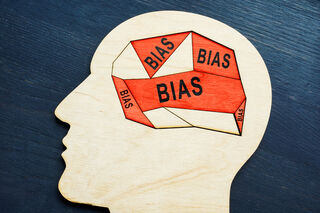ADHD
5 Tips for Adults With ADHD to Overcome Negative Thinking
Shift your focus toward doing more of what works.
Posted October 13, 2022 Reviewed by Vanessa Lancaster
Key points
- Those with adult ADHD could benefit from learning how to retain lessons from good experiences.
- When something good happens, relish it instead of dismissing it as luck.
- Consider how you can pivot by choosing the next right step in a complicated situation.
- Surround yourself with other folks with ADHD who understand the unique challenges of being neurodivergent.
Have you ever noticed how people with ADHD, regardless of age, remember the negative things people say about them more than the positive? While all human brains are wired for the negativity bias, the minds of those with ADHD seem particularly vulnerable to holding on to what is "bad" about them.
Most likely, this pattern developed over many years of receiving criticism for forgetting things, doing them in unique ways, struggling with impulse or emotional control, etc. While it’s helpful to remember lessons from challenging situations in the past so we can apply them to the present and the future, many folks with ADHD actually would benefit from learning how to retain lessons from good experiences.

This positive reinforcement helps us grow, learn new skills and be self-confident–all important contributors to a fulfilling life.
Change is possible if you find that your negative thinking is getting in the way of a more positive outlook. When you start small and develop the habit of shifting your focus to noticing and then doing more of what works, you actively begin to overcome negative thinking, develop a growth mindset, and lead a more rewarding and productive life.
Positive, beneficial experiences not only serve as the foundation of self-esteem and self-management but also nourish inner strengths. For the good moments to outmaneuver the negativity bias, they must be installed in the brain's neural structures. This process requires being held in the working memory long enough to be transferred to the long-term memory.
Folks with ADHD, by definition, usually struggle with working memory challenges. So, this transfer doesn't occur as frequently as we would like, if at all. So the key is to focus on positive thoughts and experiences more frequently. By gradually increasing these good moments, you will get to that "long enough" period to reverse the negativity bias.
Then, you can live in the power of ‘yet’ instead of the shadow of ‘can’t.’ By accepting that life is a series of taking reasonable risks, weighing the costs and the benefits of things, and being spontaneous when the time is right, you turn up the volume on optimism and confidence. You pay more attention to what is going well and your innate talents. This process helps you build resources to assist you when the going gets tough. You learn to distinguish between real threats and distortions that mimic them.
So how do you actually lower the noise of the negativity bias?
1. Slow things down.
When something good happens, relish it. In our ultra-fast-paced world, people move on to the next thing so quickly that they miss the important integration needed to consolidate memory.

Slow down by taking a more mindful approach to your day. As the saying goes, stop and smell the roses. Release the pressure to stay focused by allowing your mind to wander. Take time to notice when something feels good, and reflect on that experience. Maybe you enjoyed your favorite lunch in the park. Perhaps a coworker complimented you on a job well done. Or, you’re simply feeling good on this day and looking forward to seeing a movie with a friend later. Catch these positive feelings in the moment, and savor them.
2. Reflect on the day’s highs and lows.
Practice doing "highs and lows of the day" at dinner with friends or family. If others aren’t around, try journaling, or find a comfortable spot for self-reflection. By doing this exercise, you create a safe place to hold both the positive and negative occurrences simultaneously–giving them equal weight. This process will help build new, essential neural pathways. If daily "highs and lows" are too much to fit in, then do them once a week at regular times, like Sunday dinners. This way, you can reflect on the previous week and set the tone for the week ahead.
To avoid dwelling on the lows too long, try to think of an actionable way to bounce back or learn from a negative situation. This will help build your resilience and boost your confidence. Here are a couple of examples of positive turnabouts to place old, critical thinking with useful alternatives:
Replace: I was too distracted at work today and didn’t finish what I promised to do.
Instead: I will find a quiet place to focus on my project tomorrow.
Replace: I feel bad that I forgot to wish my parents a happy anniversary.
Instead: I'll set up a reminder to call them tomorrow morning. I know they will be happy to hear from me, even if I'm a day late.
Remember, whatever you did yesterday is over. Today is a new opportunity to pivot and do something different.
3. Seek supportive connections.
These days, there’s a lot to be upset about in the world, and we don’t have control over most of it. But, we can control whom we welcome into our lives. We can seek out people who are kind, understanding, and supportive.

Adults with ADHD benefit from a support system of people who understand their particular challenges–folks who get what it is like to live with a neurodivergent brain. These individuals and communities can prop you up if you're stuck in a negative mindset. They may be friends, neighbors, relatives, or coworkers. Open yourself up to those who will bring positivity and caring into your life.
You will create good memories and enjoy positive experiences through strong relationships. These interactions build the neural pathways we seek to create, increase inner strengths and foster interpersonal connection.
4. Nurture the mind/body connection.
Exercise and physical well-being positively impact our emotions and state of mind. A walk, bike ride, or even dancing can improve your mood just as much as it provides an energy boost. Yoga and meditation are mindfulness tools that can help you focus and stay positive. Exercising also allows you to take a break from your daily demands.
Most importantly, physical activity keeps you away from screens and devices, so your mind can rest and unplug. Make movement a part of your self-care routine, and enjoy the benefits of calm and relaxation.
5. Keep it up with a growth mindset.
For ADHD adults, the pull towards negativity and retaining bad experiences is longstanding and ingrained. Reversing the course is an uphill challenge. However, it is possible to improve and be successful with practice and patience.
Take things one day at a time, and use a “growth mindset” approach. Simply put, be open to learning from your experiences and changing for the better. See if you can gradually increase the good moments in your day and keep building them up like a stack of blocks. If you have a setback, acknowledge it. Then dust yourself off to get back on track.
Resilience goes a long way in turning a negative mindset into a positive one. It’s the antidote for anxiety and shame, which is why resilience is so crucial for helping adults with ADHD turn down the noise of self-judgment and turn up the volume on personal validation.





